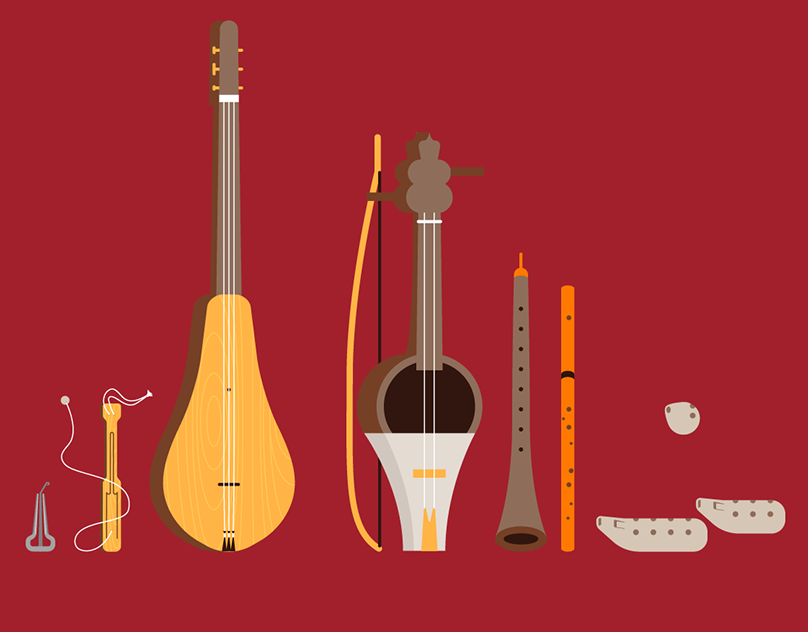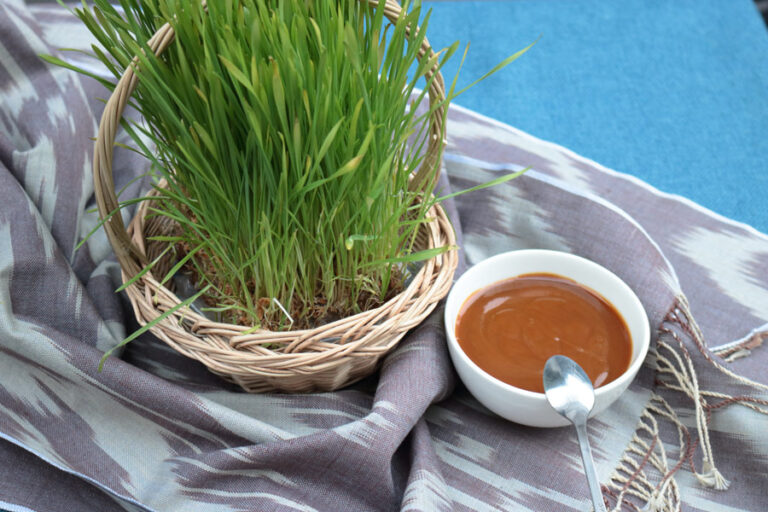Kyrgyz Musical Instruments
The Kyrgyz people have used various musical instruments since ancient times. Music accompanied the Kyrgyz in various life situations—from military campaigns and welcoming guests to solemn celebrations and memorials.
The komuz, kyl kiyak, dobulbas, and kerney are far from a complete list of folk instruments that were made from readily available materials and were convenient for carrying and transporting during numerous nomadic transitions.
Welcome to a musical journey by Kyrgyz Guide’s interactive infographic, where you can visually explore and listen to the rich sounds of 11 key Kyrgyz musical instruments. Experience their traditional beauty and sonic heritage firsthand.
The Komuz
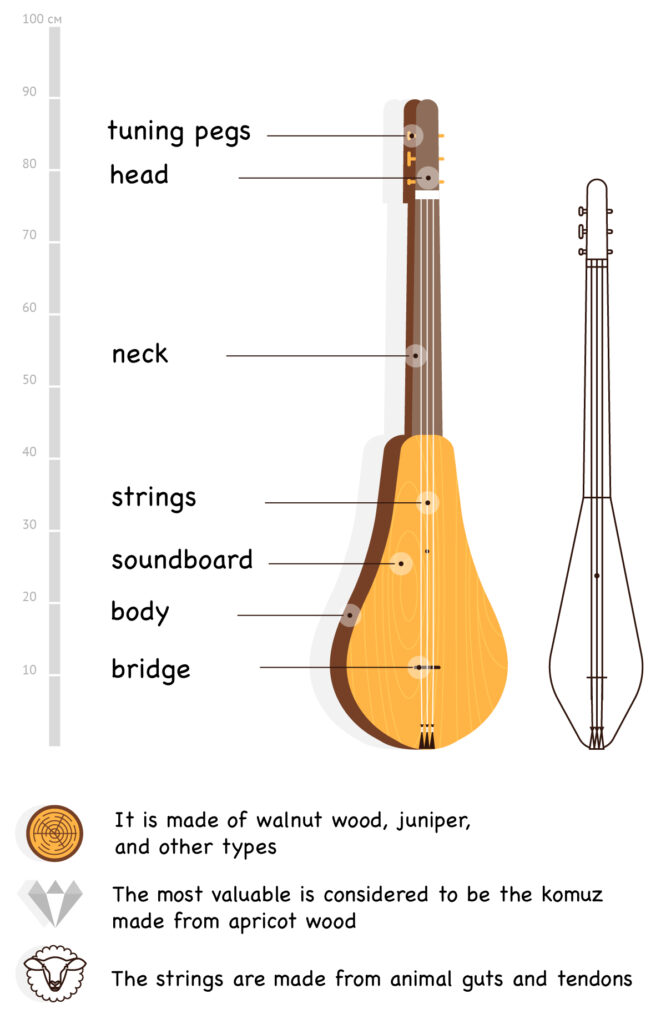
The Komuz is an ancient Kyrgyz string instrument. It consists of two main parts: the body and the neck, along which three strings are stretched. The instrument’s length is approximately 90 centimeters, and the widest part is between 19.5-22.5 centimeters. All parts—the body, head, neck, bridge, and tuning pegs—are made of wood. In ancient times, strings were made from animal guts and tendons, but now silk threads or synthetic materials are used. The sound quality of the komuz depends on the strings and the type of wood it is made from.
Listen to the sound of the komuz
Ancient komuzes were smaller than modern ones for the convenience of the rider. They also differed in the shape of the body. For example, the komuz of the great akyn Toktogul had a rhomboid shape.
Kyl-Kiyak
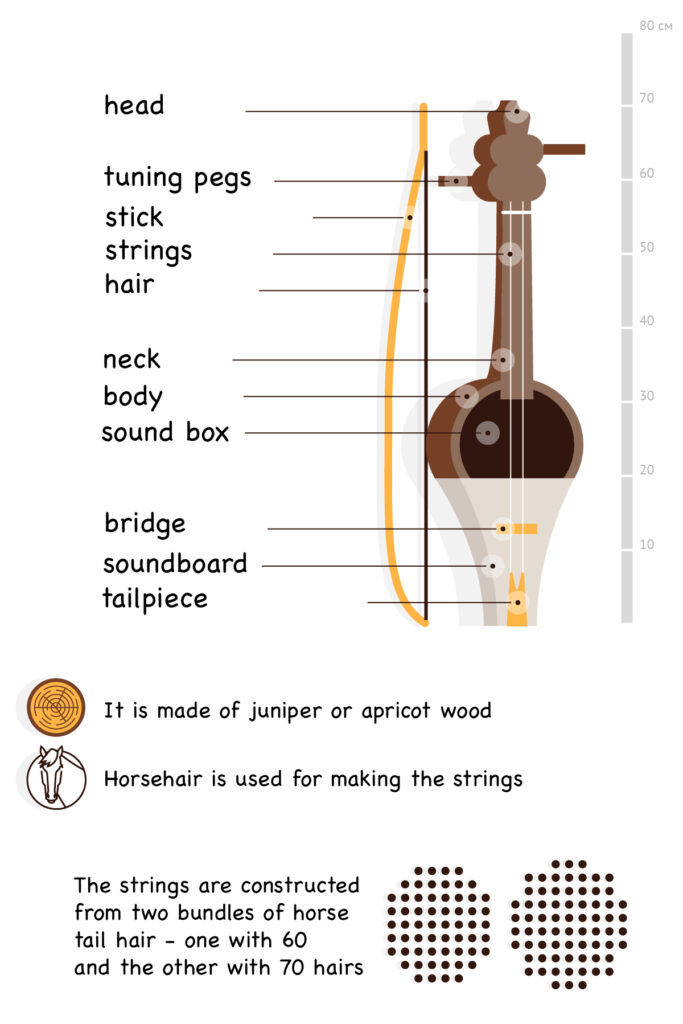
Kyl-Kiyak is a two-stringed bowed instrument made from the wood of the apricot or mulberry tree. It is no longer than 65-70 centimeters, with the depth of the body’s bowl being 3.5-5 centimeters, resembling a halved inverted pear. Half of it is covered with a soundboard, which is stretched with treated camel skin. A support is installed across the bottom. In the middle of the bottom, a piece of thin leather—kutkun (string holder)—is stretched, the edge of which is fixed at the end of the instrument.
Listen to how the kyl-kiyak sounds
Kerney
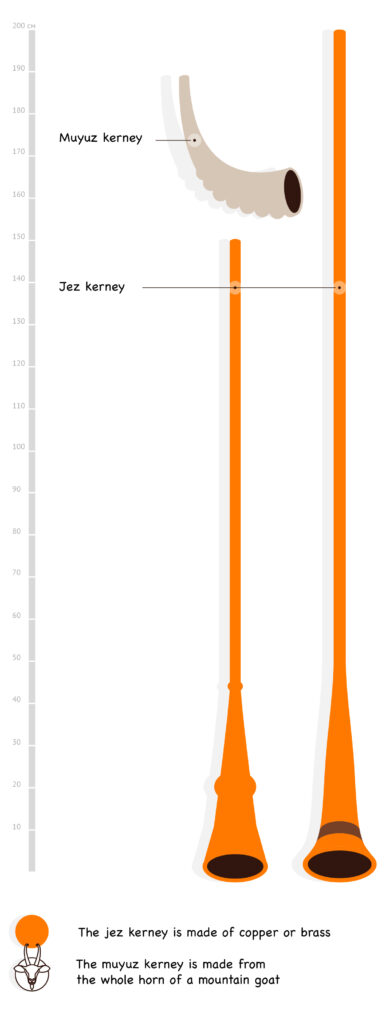
Kerney is one of the Kyrgyz wind instruments, analogous to horns. It produces a very strong natural harmonic sound. It was used for signaling in military campaigns or together with the surnay, dobulbas at various celebrations. Mentions of this instrument in the epic “Manas” occur more often than other instruments.
There are two types. The first is made from the whole horn of a mountain goat. The mouthpiece is cut on the narrow side of the horn. The instrument has no other holes. Its length is about 30-45 centimeters.
The second type of instrument is made from copper. The length of the pipe is about 1.5-2 meters, with a mouthpiece attached to the end, the open side bent into a cylinder shape with a diameter of 35-40 millimeters. It has no holes for changing sounds. For convenience during transportation, it was made separable.
Listen to the sound of the kerney
Sybyzgy, Surnay
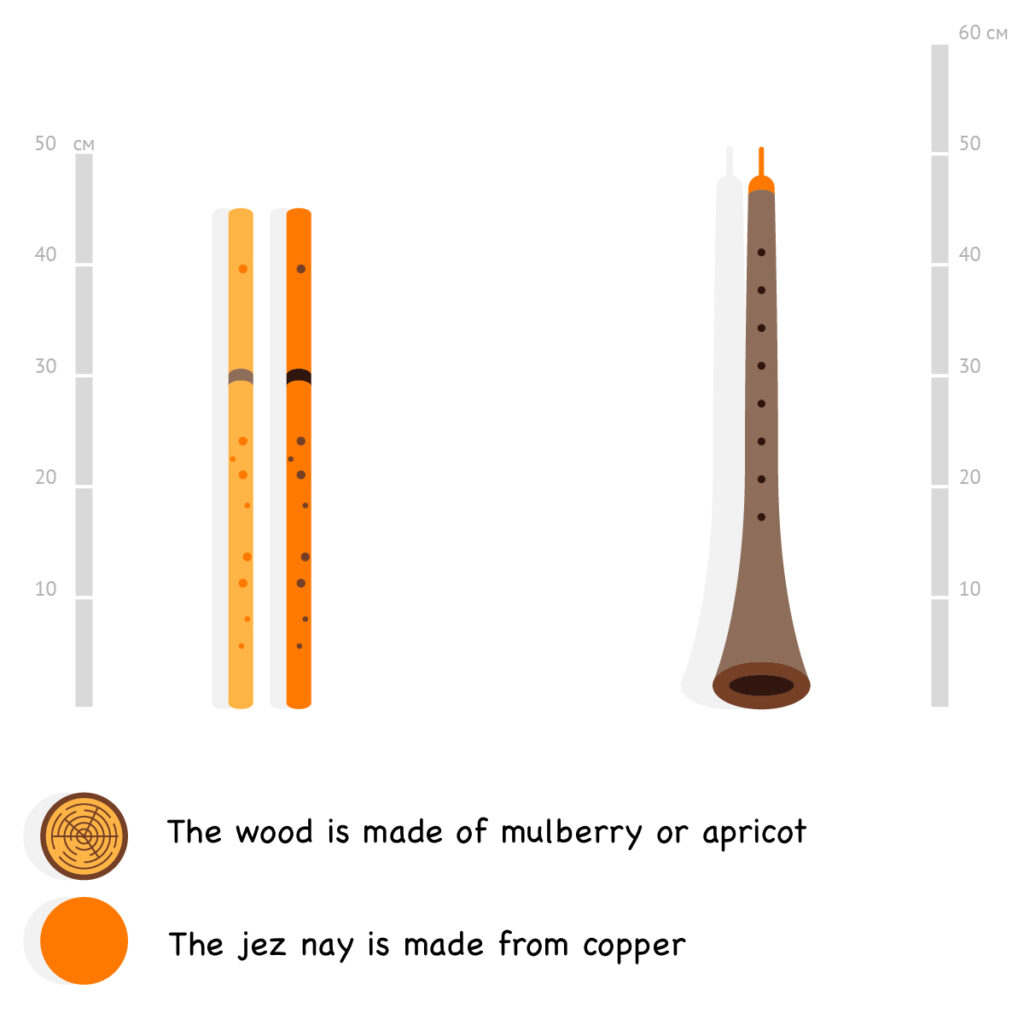
Sybyzgy (pipe) is one of the ancient wind instruments. It is a type of open longitudinal flute with a closed second end. It is held horizontally while playing. In ancient times, it was made from wood. The instrument made from copper was sometimes called “jez nay.” Now, it is only made from the wood of the apricot tree. The length is 45 centimeters, the inner diameter is approximately 16 millimeters. It used to have 4 to 6 holes, now it has 10.
Listen to the sound of the sybyzgy
Surnay (zurna) is a reed woodwind musical instrument with a double reed, a conical channel, playing holes, and a bell. The length of the instrument is from 40 to 65 centimeters, the mouthpiece is 4 centimeters long, and the bell diameter is 5-6 centimeters.
It is used in the orchestra with dobulbas, kerney during festivals, horse races, combat fights, or in military campaigns. In the epic about Manas, the instrument is described as “very loud, with a deafening sound.”
Listen to how the surnay sounds
Choоr
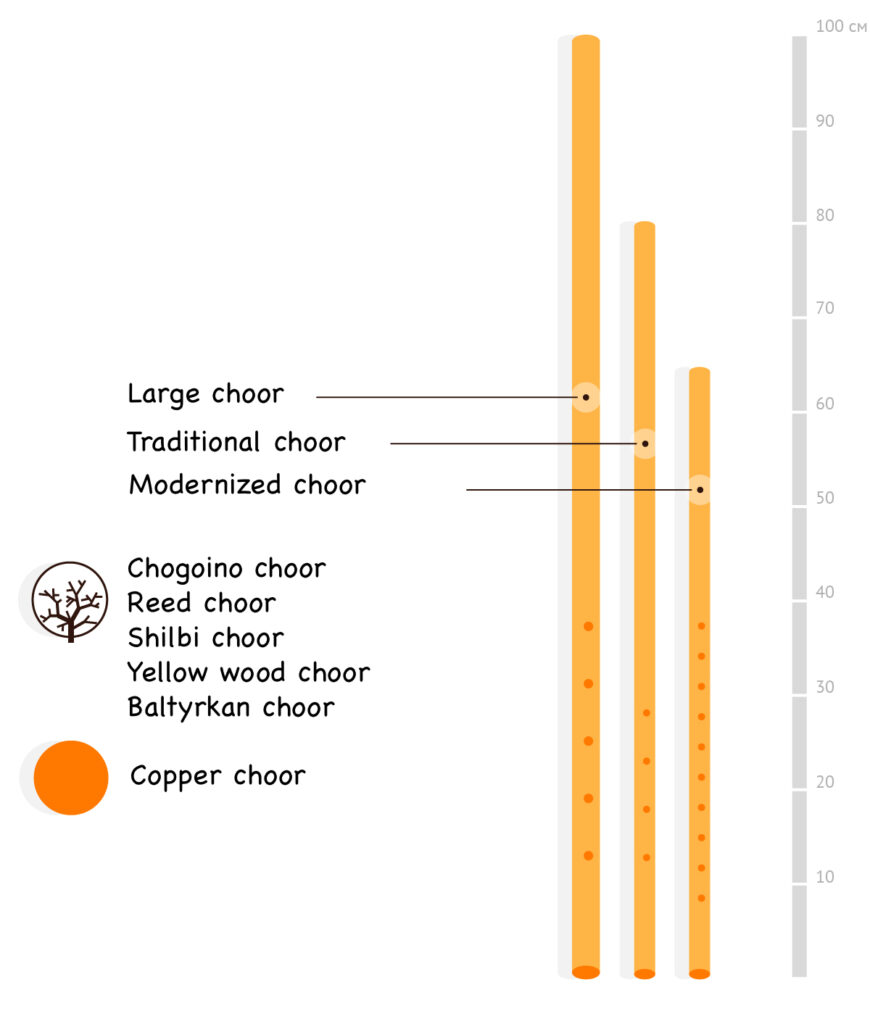
Choоr (a type of flute, folk clarinet) is an ancient Kyrgyz wind instrument. It is held vertically while playing. Previously, the instrument was rinsed with water before playing, explaining that this makes the instrument’s sound clear and ringing.
The choor has four holes. Its length is about 70 centimeters, the inner diameter is approximately 16 millimeters, and a mouthpiece made of horn bone is inserted at one end. To prevent the choor from warping or breaking, it is reinforced inside with a cleaning rod. Previously, it was made only from honeysuckle or thistle, but now it is also made from the wood of the apricot tree.
The instrument was widespread among shepherds and was also played at celebrations. Mentions of it are found in the epic of “Manas.”
Listen to how the choor sounds
Chopo choor
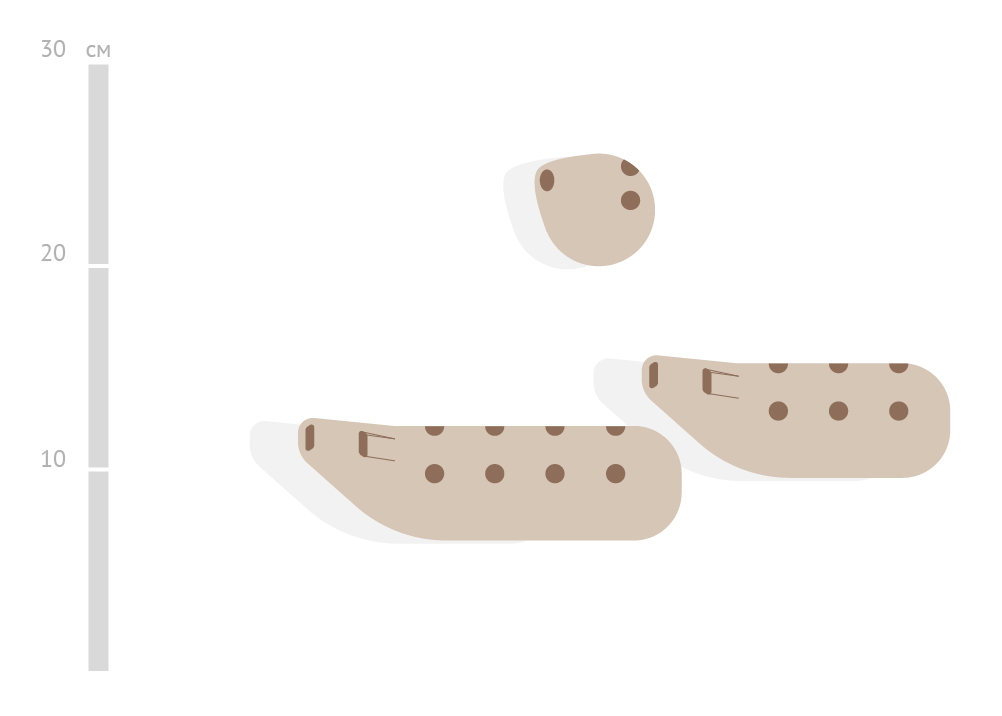
Chopo choor (clay choor), whistle is a type of Kyrgyz folk wind instrument of any shape. It has a soft and deep timbre but is not complex in performance practice. It was often used as a children’s musical instrument on which short melodies were played. It is made by firing a product made of white or red clay at high temperatures. Previously, the chopo choor had three to six playing holes and was round or oval in shape, but now a elongated form with eight or more holes and the ability to reproduce all notes is common.
Listen to the sound of the chopo choor
Dobulbas
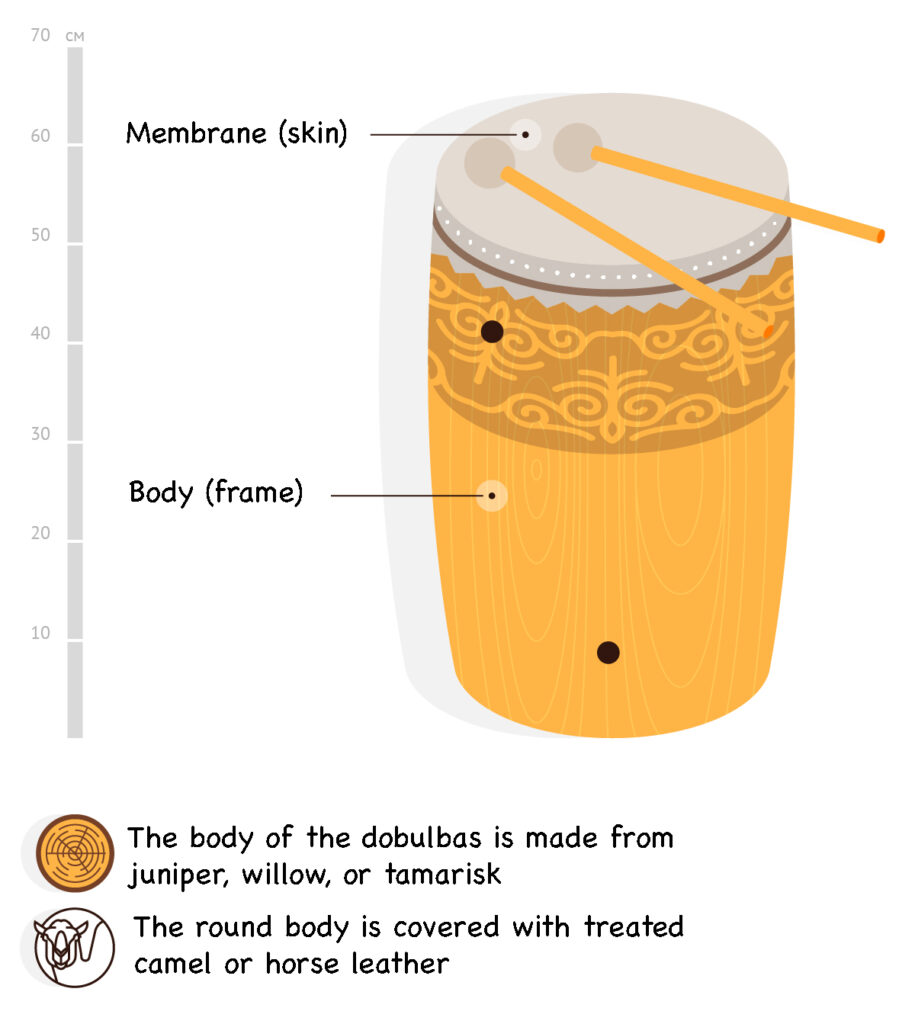
Dobulbas is a Kyrgyz folk percussion instrument. It is a one-sided round frame drum covered with camel or horse skin. The ends of the wooden rim were secured with a leather cord.
The body was made from juniper, willow, or tamarisk. The height of the traditional dobulbas is 55-70 centimeters, diameter 37-55. The sound was produced by striking with the handle of a whip (kamchi) or palm. Now, two sticks with felt tips are used. The sound of the dobulbas—strong, ringing, prolonged (with a thick membrane)—served as a signal in military campaigns, during warrior training, or in sacred acts. It was also used to welcome high-ranking guests. Mentions of it are found in the epic “Manas.”
Listen to how the dobulbas sounds
Temir komuz
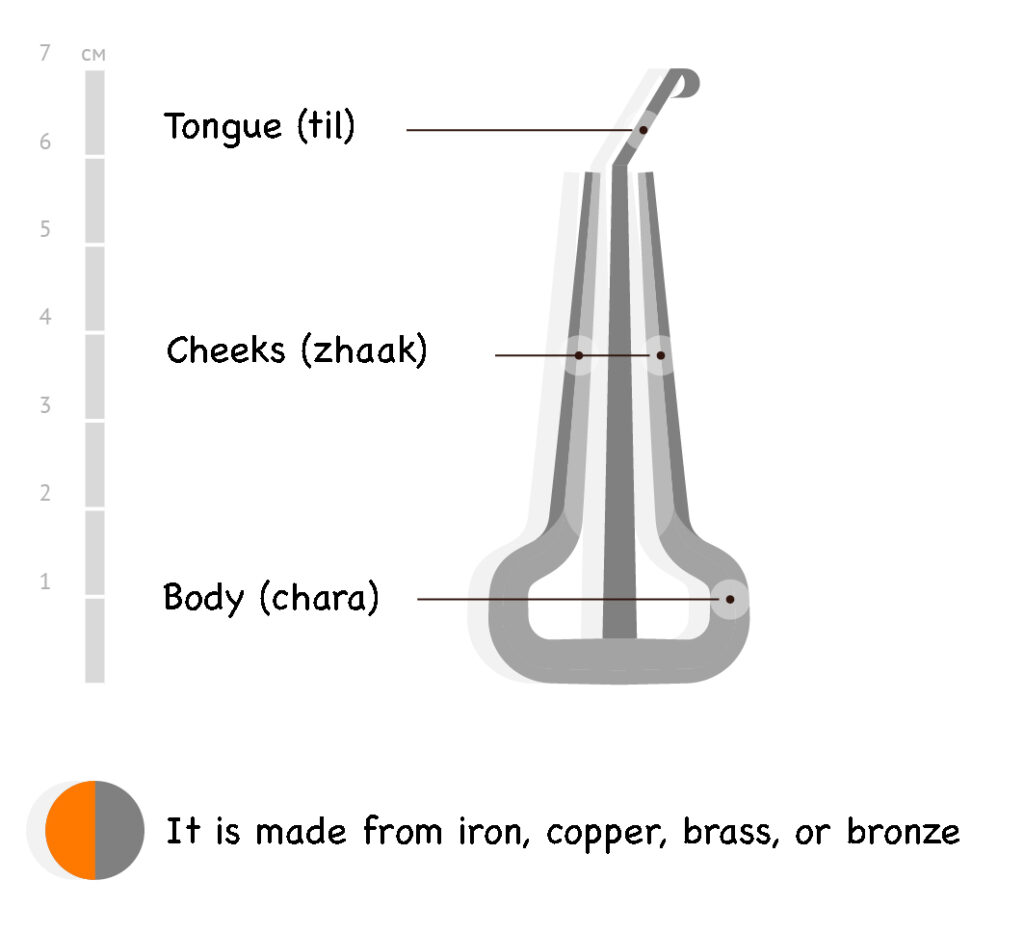
Temir komuz is one of the oldest Kyrgyz plucked idiophone instruments, a type of jew’s harp. It is a metal structure about 5-7 centimeters long in the shape of a horseshoe with a width at the base of 1.5-2 centimeters and highly elongated narrowing ends to 5-7 millimeters. The body was made from iron, copper, bronze, silver, or gold. A steel plate fixed in the middle of the arc serves as the reed.
The musician, while playing the temir ooz komuz, presses the cheeks to the teeth with the left hand, vibrates the reed by plucking it with the index finger of the right hand, while inhaling and exhaling air. By changing the shape of the mouth, the performer produces various overtone series sounds.
Previously, only women played the instrument, but later, excellent male performers also appeared.
Listen to the sound of the temir komuz
Jygach ooz komuz
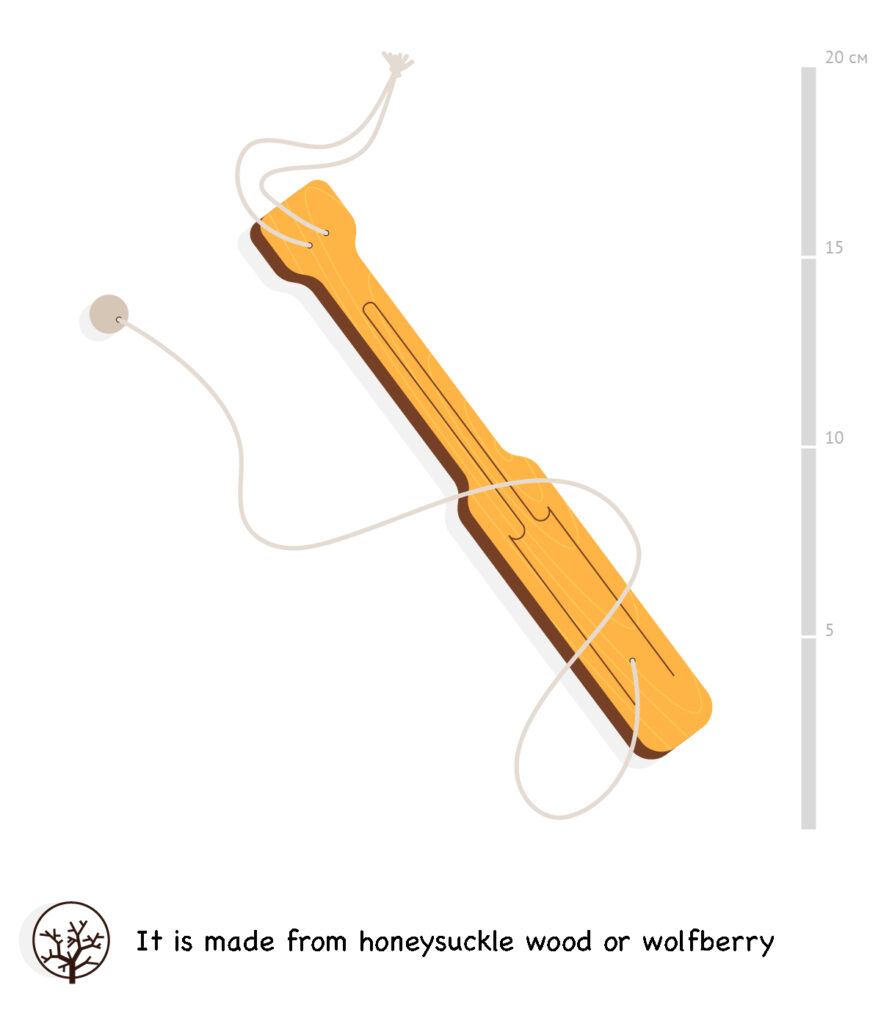
Jygach ooz komuz is a variant of the ancient Kyrgyz plucked idiophone instrument of the jew’s harp type, mainly widespread in the south of Kyrgyzstan. It is made of willow or wolfberry wood, which gives the instrument a unique sound.
It is a wooden plate with a narrowed end, ranging from 13 to 18 centimeters in length and from 1.5 to 2 in width. A tongue is cut out in the plate, to which a 30-centimeter silk thread is attached. The principle of sound production is similar to the temir komuz, with the vibrations of the tongue achieved by pulling the thread.
Listen to how the jygach ooz komuz sounds
Jetigen
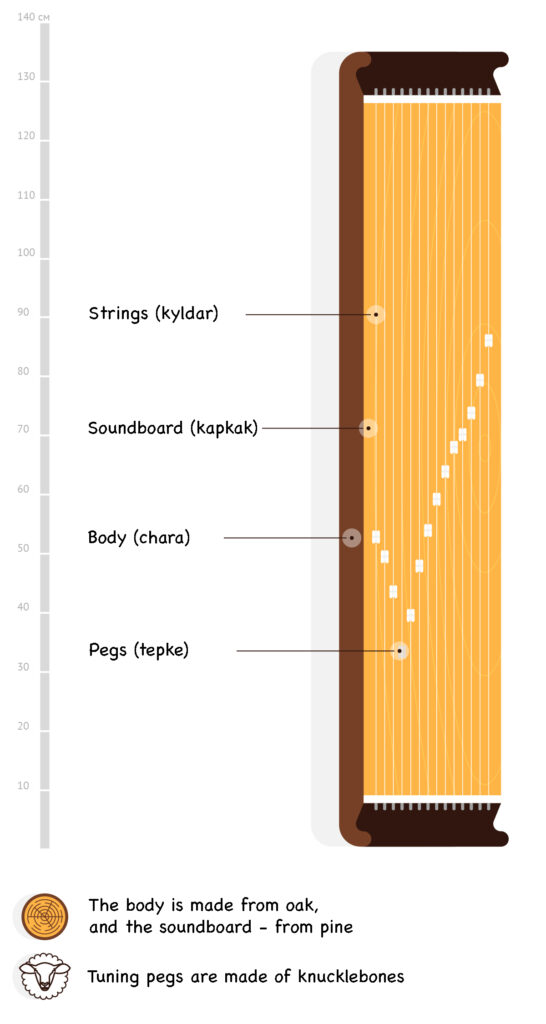
Jetigen is an ancient Kyrgyz stringed plucked instrument, a type of psaltery (harp). The first mentions of it were found among the Yenisei Kyrgyz, but it was forgotten when they migrated to the territory of modern Kyrgyzstan. Its revival began only in our times. It is known by several names—jetikan, jetikhan, chatygan. Among the Khakas, the instrument has been preserved under the name “chatkan.”
In Kyrgyzstan, the body is made from oak wood, and the soundboard from pine. The body length varies from 1 to 1.5 meters. The ancient jetigen had seven strings, but now versions with 14 strings are also encountered. The role of the bridge is played by alchik, their number varies according to the number of strings. The sound is high, clear, strong.
Usually, this instrument is played by plucking the strings, but there are also techniques of playing by strumming, tapping, or pinching.
Listen to the sound of the jetigen
Editors: Nurgul Maksutova, Taalaybek Orozkulov
Designer: Daniil Sulaimanov
Programmer: Javlon Kurbonbek
Manager: Islam Sultan
Source: Based on the materials from “Anthology of Kyrgyz Musical Instruments” by Balbaya Alagushev.
Music performed by: the folklore-ethnographic ensemble named after Chalagyz Isabaev “Kambar-akan”, the music group of the Jalal-Abad regional philharmonic named after Toktosun Tynybekov “Kerney-surnay”, performer J. Aisaev; from the collection “Anthology of Kyrgyz Music”, 1974.
